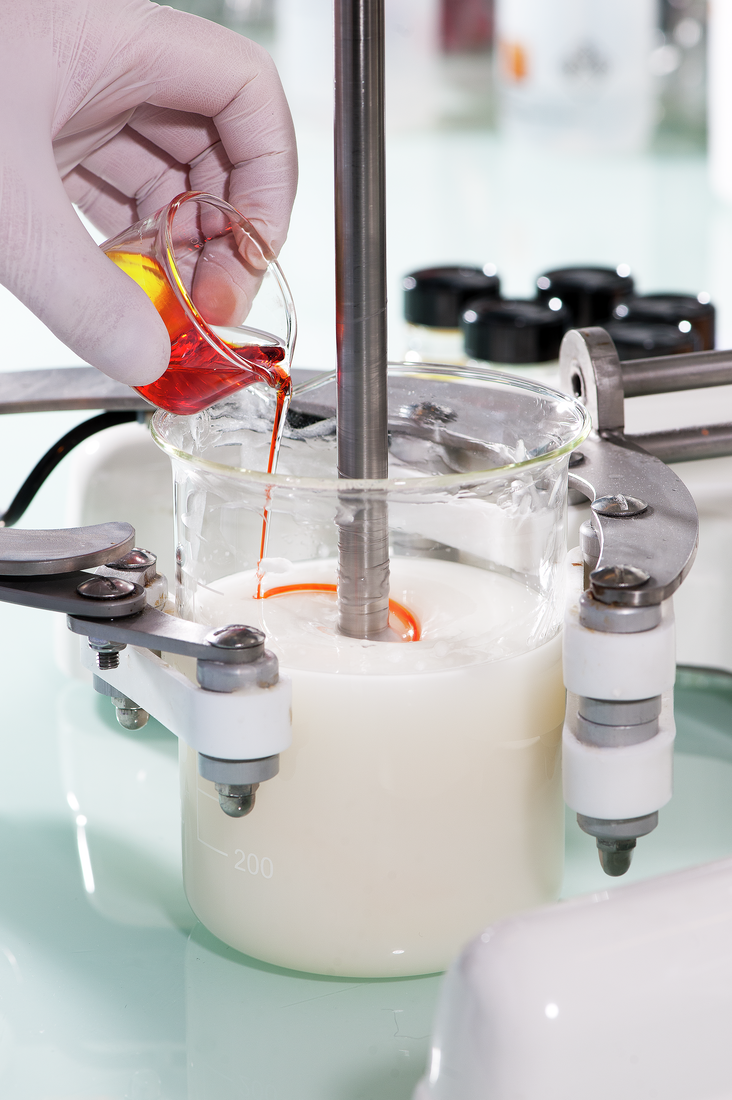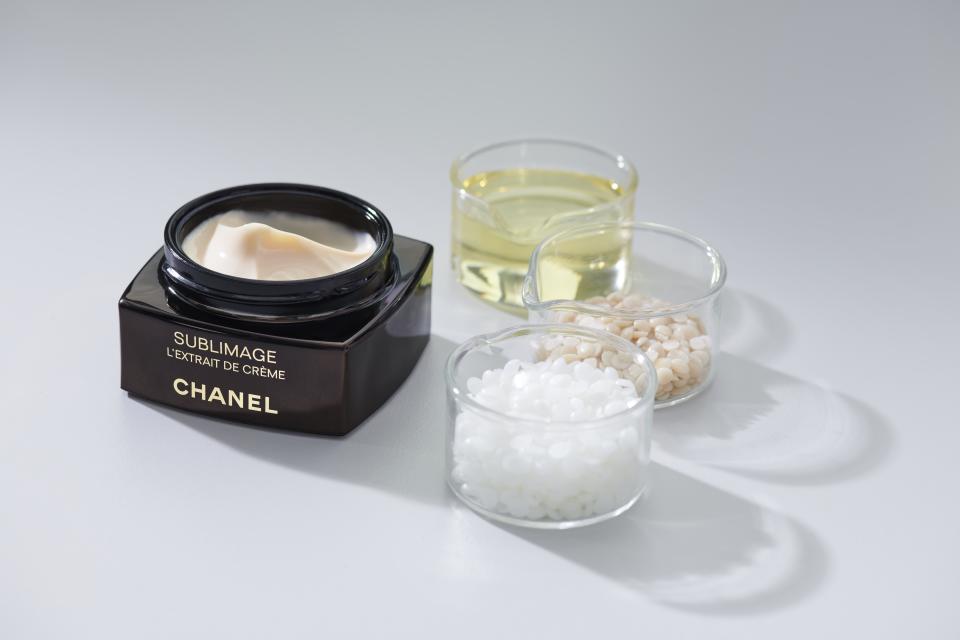Inside Chanel’s ‘Integrative Beauty’ Strategy

PARIS — Chanel for the first time unveiled some inner workings of its beauty research and innovation center, located in the Paris suburb of Pantin, as the group outlined its “integrative beauty” strategy.
That approach manifests itself in everything from product ingredient sourcing to testing, formulation and packaging.
More from WWD
It’s an approach and philosophy that, according to Blandine Velin, international head of influence and brand engagement at Chanel fragrance and beauty, are “the bedrocks of the house’s creation and the embodiment of Gabrielle Chanel.”
She championed “for women to become who they want to be in the world and really drive their destiny,” continued Velin. “Everything about Chanel integrative beauty is about this.
“Chanel integrative beauty, according to Chanel, is a continuation of the holistic vision imagined intuitively by Gabrielle Chanel,” continued Velin, calling it a “state of mind, a way of presenting one’s self to the world, from body to mind and mind to body — really fulfilled in harmony with the environment and the world that we all live in.”
Velin further described integrative beauty as “essential.”
“It’s conveyed by a culture of minimalism, and where all the superfluous is stripped away to really fulfil a woman’s desire,” added Velin.
She said Chanel’s integrative beauty is guided by the expertise of the house’s scientists, as well as a network of experts and talents connected throughout the world.
Pantin is at the core of all that.
“It’s a real link between the past, the present and tomorrow,” said Velin.
In the 19th century, the French soap, makeup and skin care industry was centered in Pantin, due to its proximity to the Seine River and railways.
In 1924, Gabrielle Chanel created La Société de Parfum Chanel there, which secured the future of the house’s iconic fragrance Chanel No.5 and was also the springboard for Chanel beauty’s development. That same year, Chanel created its first makeup line and in 1927 it launched skin care.
“Today, Pantin is where beauty continues to be invented,” claimed Velin.
“Chanel research has always contributed to developing an integrative beauty — a beauty which celebrates singularity, individual fulfillment and the connection of each woman with herself, others and the world,” said Nathalie Volpe, international innovation research and development vice president at Chanel fragrance and beauty.
That counts about 300 scientists and it collaborates with academic institutes in various fields.
“Our researchers are working every day for a common mission, which is to dedicate science and innovation to understand the plurality of beauty to imagine and contribute to the creation of products and rituals that will combine performance, safety and excellence in execution,” said Volpe.
To help with this, Chanel beauty has five innovation centers, with the most recent opening in Shanghai. The others, alongside in Pantin, are in Piscataway, N.J.; Seoul; and Funabashi, Japan.

“By constantly monitoring these local markets, we are able to identify potential innovation,” explained Stéphane Bureau, director of international centers and technological innovation at Chanel fragrance and beauty.
He said the house draws inspiration from the pharmaceutical, food, tech and biomedical sectors.
“And we are looking at different industries, like paint and automotive, at the cutting edge when it comes to color,” said Bureau, also naming opticals, printing and ceramics as inspirations.
Chanel’s network is bolstered with collaborations with partners, such as start-ups, universities and raw material suppliers, blending open research and open innovation.
Such start-ups include LabSkin Creations, focused on advanced 3D skin models; Damae Medical, which has an imaging system joining penetration and cellular resolution in 3D, and Mycophyto, centered on positively impacting soil biodiversity thanks to its selections of mycorrhizal fungi.
Chanel has five open-sky labs, in Costa Rica; Gaujacq, France; France’s southern Alps; Madagascar, and Bhutan.
These open-sky labs are biodiversity exploration territories, where ingredients can be culled for cosmetics. Madagascar vanilla and its exclusive active ingredient vanilla planifolia are combined with swertia from the Himalayas in the Sublimage L’Extrait de Nuit formula, for instance.
In open-sky labs it is possible to experiment with plant production, as well as social and environmental innovation.
The fundamental principles of the open-sky labs include that nature is the foundation of Chanel’s inspiration and the cradle of its expertise. They include that the group co-constructs fair trade supply chains with producers, preserves biodiversity and emphasizes the value of terroirs in an agroecological and agroforestry approach. Principle five is that Chanel protects the intangible heritage linked to plants it uses.
Chanel has been studying people’s skin since 1991. It has collected more than 60,000 photographs of faces coming from nine countries. Some people Chanel has followed for many years. Each photo is evaluated according to a proprietary methodology, resulting in 4 million data points having been collected, from questionnaires, as well.
In 2014, Chanel initiated genomic studies, enabling it to identify genetic factors associated with aging. The house’s most recent study, in 2021, was conducted in Senegal.
The idea is to conceive ever more relevant solutions for each individual. There are numerous ways this is approached.
In 1993, Chanel integrated a sensory evaluation laboratory focusing on people’s reaction to the touch and look of products.
“This expertise was enriched by the research laboratory [focused] on emotion and well-being,” said Marie-Hélo?se Bardel, head of the neurosciences department at Chanel fragrance and beauty. “Chanel strongly believes that all forms of beauty start by feeling good.”
So the aim is to develop products giving a high level of pleasure and emotion. To help learn what works best, neurosensors are placed on a person’s head and then as they test a skin care product, it’s possible to read their brainwaves as translated into little dots inside a circle. The dots migrate according to the emotional reactions, including excited/surprised, tense/nervous, bored/tired or sad/disappointed.
Chanel has been delving into different sciences, such as senescence, with interdisciplinary research teams. Those are divided into three hubs in Pantin: a biology and clinical hub, a benefits and performance hub, and a neurosciences hub.
“Senescence is the biological process, the natural process of aging,” said Youcef Ben Khalifa, beauty research and performance director at Chanel fragrance and beauty.
“That is highly promising aging research that offers unprecedented perspective to ensure healthy skin full of vitality,” explained Armelle Souraud, international scientific communications director at Chanel fragrance and beauty.
Senescence is integrated into the brand’s antiaging products, most recently in the new Sublimage Les Extrait line.

Senescence is a hot topic for cosmetics makers, as well as for the medical field today.
Chanel also focuses on the mind-body link, such as how that pertains to fascia, the connective tissues surrounding a person’s muscles, organs and brain. With fasciatherapist Hélène Bourhis-Bois, the group has developed exclusive La Fascia de Chanel protocols. These entail the slow, intense stretching of facial fascia with the aim of obtaining radiant, toned and vital skin.
“Ten years ago, we were looking for an innovative massage technique that allows us to embody Gabrielle Chanel’s holistic vision of beauty,” said Valérie Michel Binotto, development training director of cosmetic products, institutes and spas at Chanel. Fascia, she explained, combines skin beauty and well-being.
“It is a very exciting area of research, because it’s unexplored,” said Aurélie Porchereau, research project manager in Chanel’s neurosciences department.
“It’s a true mind and body approach — a real integrative vision of beauty,” said Michel Binotto.
Best of WWD
Solve the daily Crossword

